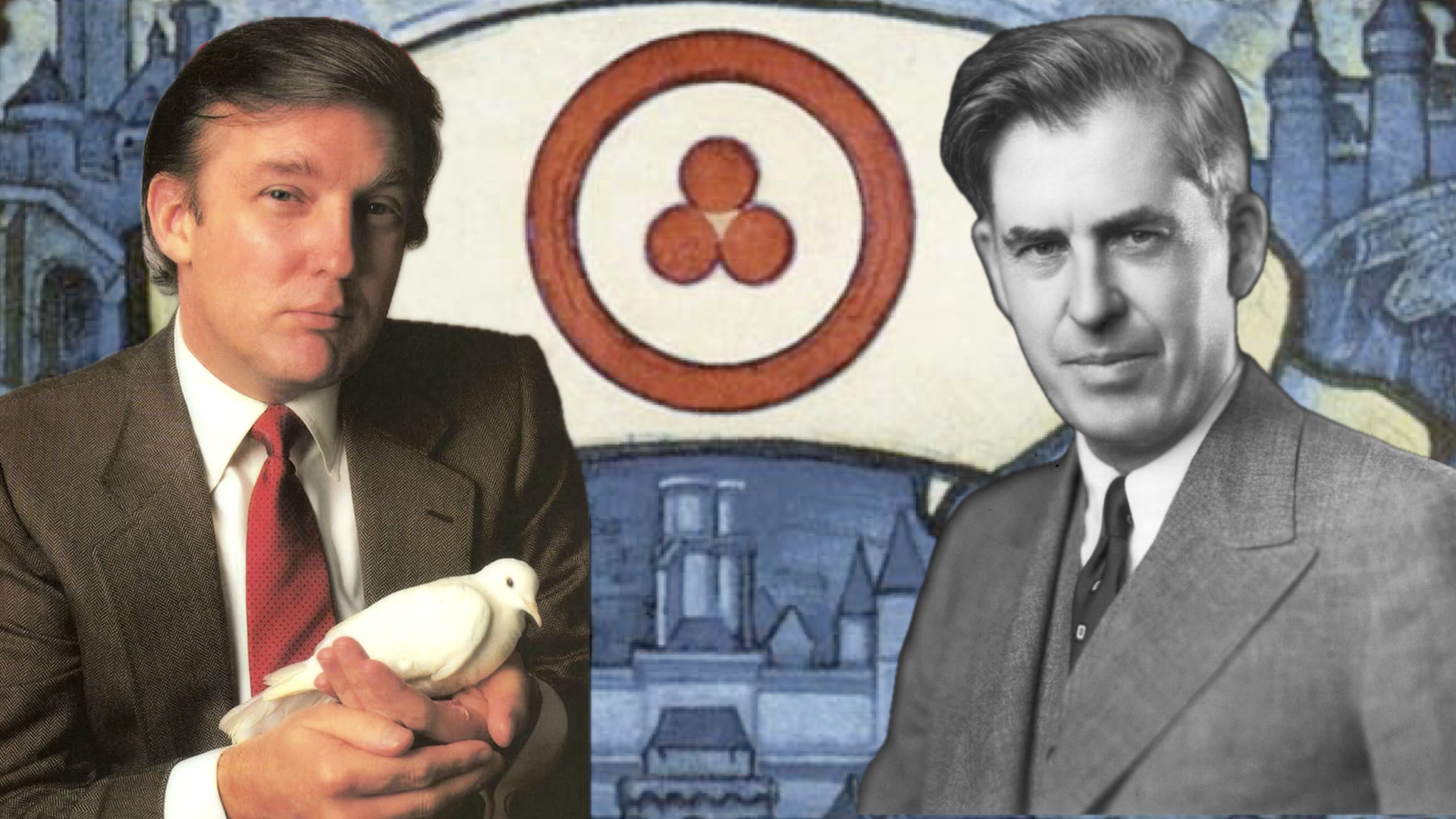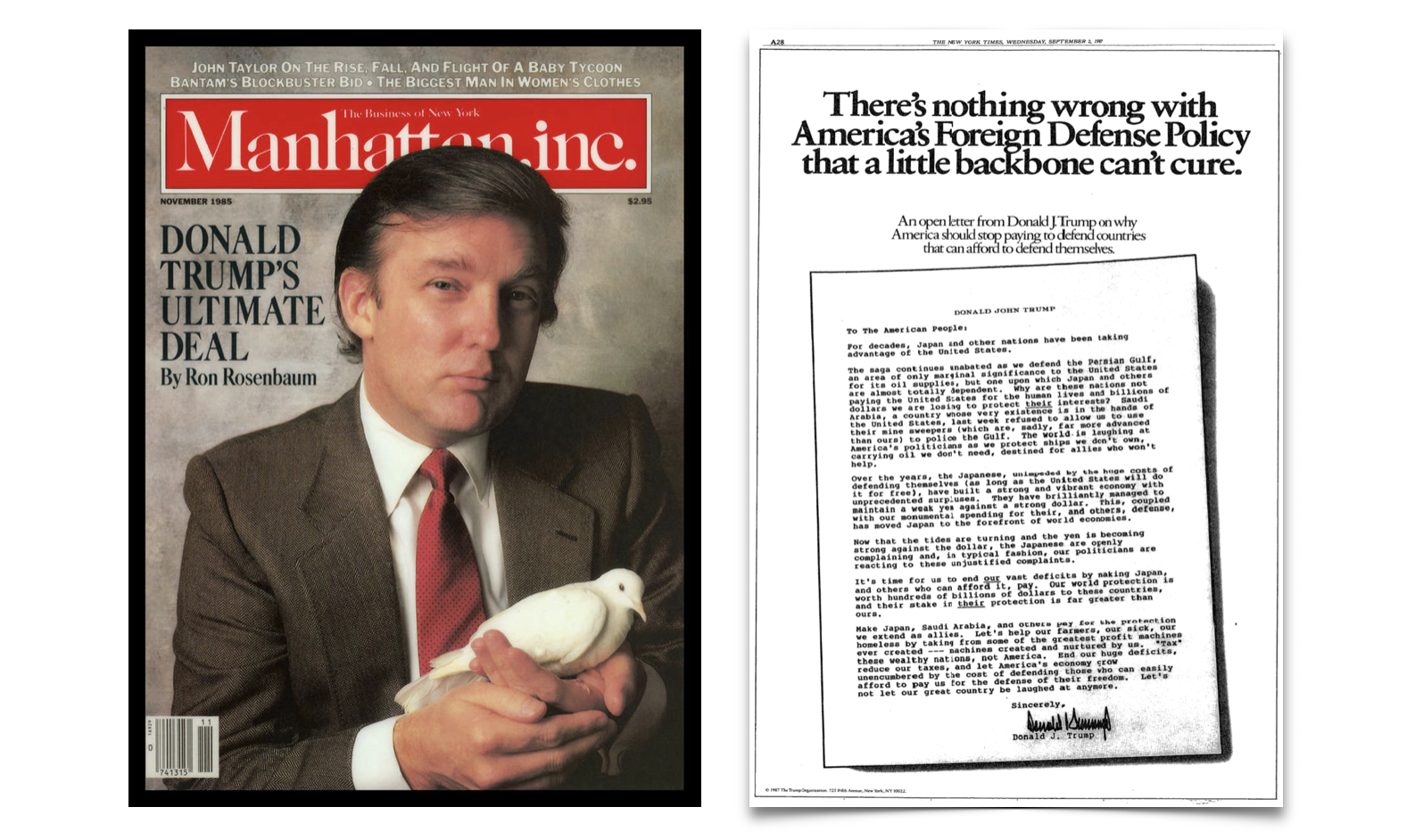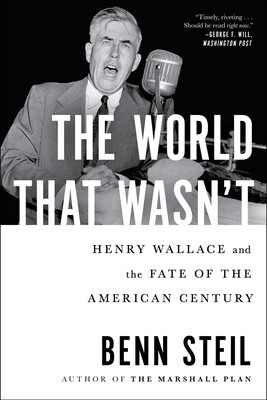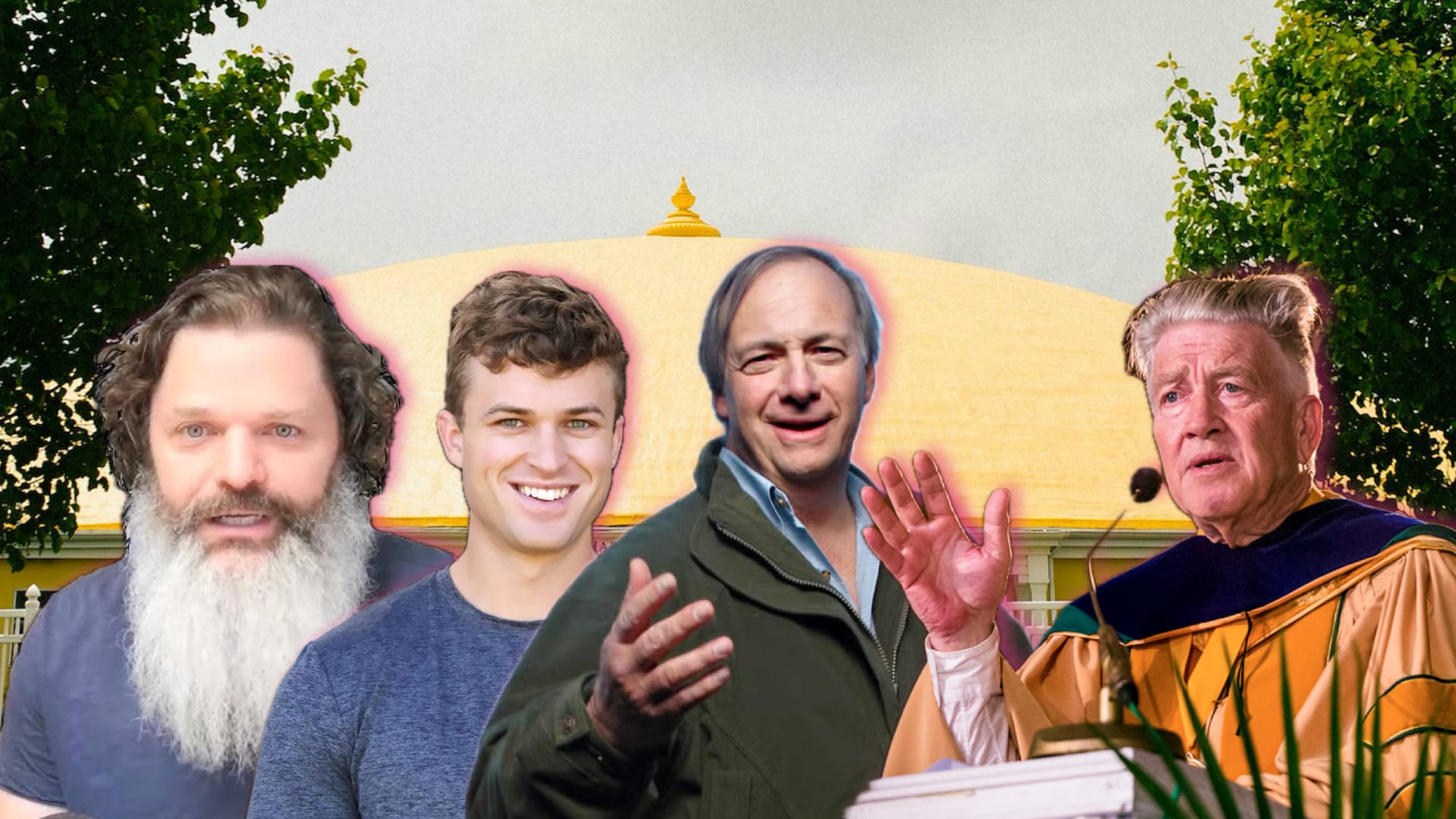Donald Trump Isn't the First Presidential Candidate Groomed by the KGB
Before Donald Trump, there was Henry Wallace. He ran for president in 1948, promising "peace" amid fears of nuclear war.

As Donald Trump capitulates to Putin on Ukraine, many are wondering what leverage Putin has over him and revisiting longstanding evidence that Trump has been groomed for decades as a KGB asset. Trump was, however, not the first candidate selected for this mission.
That dubious honor goes to Henry A. Wallace, agriculture secretary under Franklin Roosevelt during his first and second terms (1933-1940), and Vice President during his third term (1941-1945). Wallace, a crop scientist by training, became increasingly interested in religious mysticism and began a lengthy correspondence with Nicholas Roerich, a Russian emigré artist based in New York City. Roerich was a student of theosophy, the esoteric belief system created by Helena Petrovna Blavatsky decades prior; Roerich and his wife Helena expanded on Blavatsky's ideas to create Agni Yoga, which attracted devotees like Wallace.
Wallace's "Guru"
Wallace and Roerich had a strange relationship. A series of letters wherein Wallace calls Roerich his "guru" documented their private world. Wallace referred to Secretary of State Cordell Hull as "the Sour One," and called Roosevelt both "the Flaming One," and "the Wavering One," depending on Wallace's assessment of him. He spoke of the “first crude beginnings of a new age."
One of Roerich's projects was the development of a global peace pact, an idea for international cooperation he first envisioned as far back as 1899 and developed further while traveling the world with his wife. By 1929, he had drafted the Roerich Pact in the form of an international treaty to be signed by the nations of the world. Drawing on his artistic leanings, Roerich developed a bold flag to symbolize the pact's ethos: a red circle encompassing three smaller solid circles. He called it "the banner of peace."

Wallace spent much of his time during the first Roosevelt administration advancing Roerich's agenda, including the Peace Pact, which was ratified by the United States in July 1935. More important than the pact itself, however, was Roerich's growing influence on presidential policy, through Wallace. Enthralled with Roerich's mystic vision, Wallace sent him to lead a delegation through Asia, ostensibly to find drought-resistant strains of wheat. The trip ended in chaos. Japanese authorities suspected Roerich of working for multiple intelligence networks and expelled him in June 1935.
Wallace managed the fallout from the botched mission and began to feel disillusioned with Roerich, upset that he had embarrassed the United States government. While Wallace distanced himself publicly from Roerich, he continued to be dogged by the association. In 1940, after Roosevelt had tapped him as his running mate, Republicans obtained copies of his correspondence with Roerich, which they threatened to release, but ultimately did not. Dubbed "the guru letters," they painted Wallace as a dupe at best and a fanatic at worst, in the thrall of Roerich and his international, "orientalist" worldview. While Wallace did serve as Vice President, Roosevelt fatefully replaced him with Harry S Truman for his shortened final term.
Collusion: Stalin's "Peace" Candidate in '48
Soviet intelligence took every opportunity to maximize their gains in the aftermath of World War II. Evidence from the VENONA project, a top secret US government effort to capture and decrypt secret communications between Soviet spies, confirms that the Roosevelt administration was loaded with influence agents taking orders from Moscow. This impacted every aspect of US policy in tangible ways, and many argue that Soviet influence played a major role in shaping post-war Europe. Alger Hiss, for example, was an advisor at the fateful Yalta conference, wherein Roosevelt, Stalin, and Churchill parceled out eastern Europe among the victors. He is widely believed to have been a Soviet spy, and was identified in VENONA and KGB files under the codename ALES.
Truman's use of nuclear bombs to end the war shocked the world. In particular, nuclear scientists such as Albert Einstein, Leo Szilard, Harold Urey, and Robert Oppenheimer banded together to oppose the further development and use of such weapons. The Federation of American Scientists (now known as the Federation of Atomic Scientists) published the influential book One World, or None, which made the case for a global authority to regulate and ultimately eliminate nuclear weapons technology.
The Stalin regime wasted no time in capitalizing on anti-nuclear sentiments brewing in the West. Leo Szilard, the Hungarian-American scientist who helped develop the idea of nuclear fission, wrote an open letter to Stalin proposing a direct broadcast by Stalin to the American people (and also one by Truman to the Russians) discussing rapprochement, and the need to work together towards a more peaceful world. The idea was, of course, appealing: no one wanted a nuclear apocalypse, and all the top scientists agreed.
It was in this milieu that Henry Wallace abandoned the Democratic Party and ran for president under the banner of the newly-formed Progressive Party. Wallace began his effort in December 1946 by forming Progressive Citizens of America, a left-leaning populist group closely aligned with the positions of the Communist Party. PCA was critical of Truman, of the Marshall Plan, and urged rapprochement with the Soviet Union in the name of nuclear disarmament. The group included many people belonging to the Soviet spy apparatus in the United States, including lawyers John Abt and Lee Pressman. In all practical ways, it functioned as a Soviet front organization, and seeded Wallace's Progressive Party.

According to historian Benn Steil (A Genuine Case of Collusion, Foreign Affairs, 2024), the Stalin regime engaged with Wallace personally, starting in 1948. Wallace arranged for a secret meeting with Russia's ambassador to the United Nations, Andrei Gromyko, in New York in the spring of 1948. Moscow designated these discussions as "strictly secret" — a level above top secret. Even as Wallace had met with Gromyko many times in the past in their official capacity, these discussions were to be kept quiet. According to Steil, Wallace “wanted to come to a definite agreement with . . . Generalissimo Stalin on all major problems of Soviet-American relations.”
Despite violating the Logan Act (meant to prevent negotiations with foreign nations by presidential candidates), Wallace incorporated key Stalinist talking points into his platform. Steil writes, "Wallace wrote an 'open letter' to Stalin proposing steps the two sides should take to end the Cold War. Some of those steps had been indicated to him by Stalin himself, and I found documentary proof of Stalin’s approval of, deletions of, or edits to the items Wallace penned. Wallace read the letter before 19,000 supporters at Madison Square Garden on May 11 [1948]."
Reassessing Trumpism
There are few, if any, meaningful differences between Wallace and Trump policies towards Russia. And if we accept, as informed analysts do, that Trump is channeling Russian influence as we know Wallace also was, then it is logical to assert that both Wallace and Trump would reflect the same worldview, goals, and intentions.
It is easy to be sidetracked with ephemera when comparing the two. Wallace was a left-populist; Trump is a right-populist. People imagined that Trump would be tough on Russia (he is not); they imagine that Trump is motivated only by money (he is not); many leftists revere Wallace and (mostly) despise Trump; indeed, all of this is irrelevant. For a predictive model of what Trump will do, extrapolating forward from Roerich, Stalin, and Wallace is, in my opinion, the most accurate lens available.
I am asked from time to time to prognosticate about the near-future intentions of Trump and Musk. This is the perspective I use to do that. Earlier this year, a Swiss newspaper asked me whether Trump 2.0 would support Ukraine. I was quite sure he would not, even as many Europeans and Ukrainians held out hope. Ultimately, despite whatever else Trump might say, he will steer towards "Russkiy Mir" — the Soviet idea of "peace." Or put more simply, capitulation to Russian demands. (See this excellent paper on Reflexive Control, which describes this well.)

In late 1985 (not 1987, as this reprint states), journalist Ron Rosenbaum recorded a gem of an interview with Donald Trump for the magazine Manhattan, inc. In it, Trump talks about teaming up with Russia to rid the world of nuclear weapons — reprising the Stalin-Wallace platform of 1948. (He made similar comments to The Washington Post in 1984, as well.)
In Trump's words from 1985, the Trump plan is "a deal with the Soviets. We approach them on this basis: We both recognize the nonproliferation treaty’s not working, that half a dozen countries are on the brink of getting a bomb. Which can only cause trouble for the two of us. The deterrence of mutual assured destruction that prevents the United States and the USSR from nuking each other won’t work on the level of an India-Pakistan nuclear exchange. Or a madman dictator with a briefcase-bomb team. The only answer is for the Big Two to make a deal now to step in and prevent the next generation of nations about to go nuclear from doing so. By whatever means necessary." [emphasis added]
Viewing Henry Wallace and Donald Trump as equivalent demands more nihilism than most analysts can readily muster — requiring the dismissal of ideology, received knowledge, and cultural attachments that would otherwise cloud a bare-knuckled understanding of reality. But through the lens of Russian influence, Trump can be seen as a reiteration of Wallace's earlier abortive effort to capture the presidency and reshape the world. Indeed, prominent Russia proxy voices such as Oliver Stone today venerate Wallace and claim that had he been elected, the Cold War would have been avoided entirely.
As the United States increasingly seems to be coming under the influence of the wishes of Putin and Xi, and falling out of alignment with NATO and other historical allies, it looks as though the effort to capture the presidency has succeeded. Americans think in two, four, and six year cycles. Our adversaries have been thinking in decades.
Update: listen to this episode of Dave Troy Presents with historian Benn Steil, author of The World That Wasn't: Henry Wallace and the Fate of the American Century.

Additional Suggested Reading














